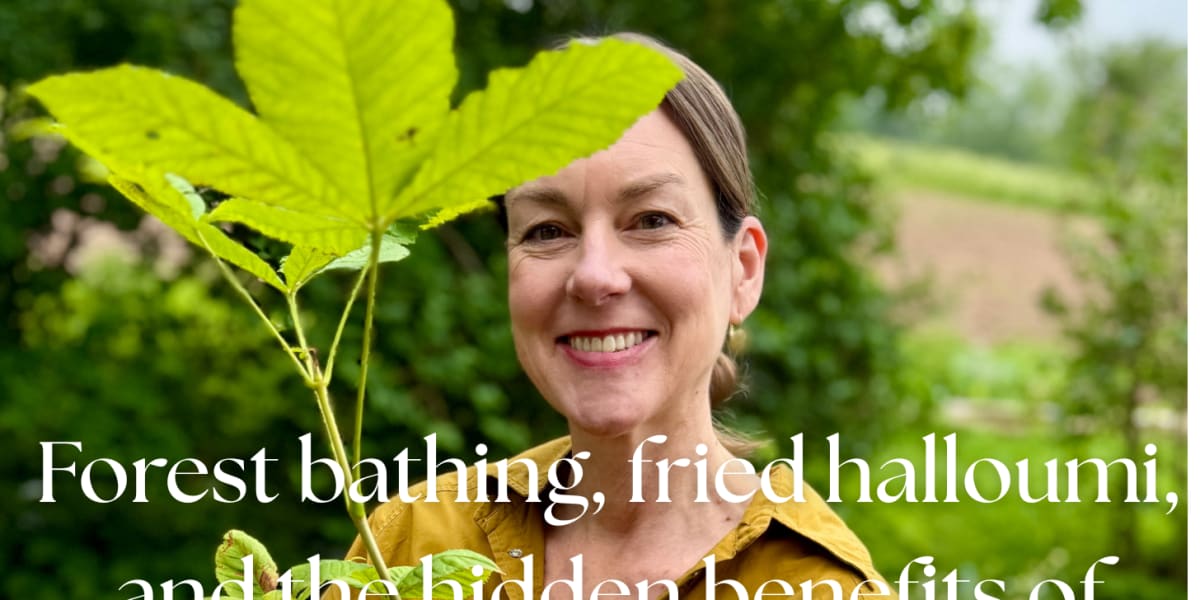In today’s fast-paced, technology-driven world, many individuals seek ways to reconnect with nature and find genuine relaxation. Forest bathing benefits have gained significant recognition for their profound ability to boost mental health, physical well-being, and overall vitality. Whether you’re new to the concept or looking to deepen your experience, exploring mindful nature walks, the shinrin yoku practice, and how to start forest bathing can transform your relationship with the outdoors. Embracing mindfulness in nature allows us to unlock serenity amid the chaos, inviting nature’s healing power into our daily lives.
Unveiling the Myriad Benefits of Forest Bathing

The term “forest bathing” might conjure images of serene woods and peaceful solitude, but its benefits extend far beyond mere aesthetics. Scientific studies reveal that spending mindful time immersed in forest environments can considerably boost mental clarity, reduce inflammation, and strengthen the immune system. Regularly engaging in this practice supports stress reduction outdoors, helping individuals combat anxiety and depression naturally. Beyond mental health, forest bathing benefits include improved heart health, lowered blood pressure, and increased energy levels, making it a holistic wellness approach.
What makes forest bathing profoundly effective is its simplicity and accessibility. You don’t need specialized equipment or extensive training—just a quiet space surrounded by trees and a willingness to be present. As you immerse yourself in the sights, sounds, and scents of nature, your body and mind synchronize in a state of calmness. This form of relaxation, rooted in Japanese culture, exemplifies how nature’s therapeutic potential can be harnessed for modern wellness. Incorporating regular mindful nature walks creates a sustainable path to mental balance and physical health, proving that sometimes, the best medicine is simply to slow down and breathe amidst the greenery.
Shinrin Yoku: Embracing the Japanese Practice of Forest Bathing

“Shinrin yoku,” translating to “forest bath” in Japanese, is a centuries-old practice that encourages immersing oneself fully into nature to promote health and healing. Unlike conventional hiking or walking, shinrin yoku practice emphasizes slowing down, engaging all senses, and truly experiencing the environment without distraction. It involves intentional breathing exercises, mindful observation of the flora and fauna, and absorbing the subtle energies of the forest. This meditative approach underscores the importance of being present, elevating the act of walking into a profound ritual of mindfulness in nature.
Practicing shinrin yoku fosters a deeper connection with the natural world, which facilitates stress reduction and emotional stability. It’s a gentle reminder that mental health benefits are often rooted in the simple act of presence—paying attention to the current moment rather than dwelling on worries or future anxieties. As more people incorporate this practice into their daily or weekly routines, the restorative powers of forests become more accessible, helping to cultivate resilience and emotional clarity. The Japanese tradition encourages us to see forests not just as scenic escapes, but as vital allies in our pursuit of wellness, reminding us of the importance of slowing down and truly experiencing nature.
Mindful Nature Walks: Cultivating Presence in the Outdoors

Engaging in mindful nature walks is a straightforward yet profoundly impactful way to incorporate mindfulness in nature into everyday life. These walks emphasize the importance of being fully present—listening to birdcalls, feeling the textures of leaves, observing the play of light through branches, and catching the scents carried by the breeze. Such practices help transition the mind from stress and distraction to calm awareness, fostering a sense of peace and grounding. The act of walking slowly and intentionally allows you to notice details that often go unnoticed in hurried daily routines.
Developing consistency with mindful nature walks can reshape your overall approach to life, cultivating patience, gratitude, and a stronger connection with the environment. As you become more attuned to natural rhythms, your capacity for stress reduction outdoors improves, leading to clearer thinking and emotional balance. These walks don’t require extensive planning—just a sense of curiosity and openness. Over time, they cultivate a habit of harmony with nature, illuminating how rekindling our relationship with the outdoors can serve as a refuge from modern stressors and a pathway to sustained well-being.
Stress Reduction and Enhanced Well-being Through Forest Bathing
One of the most compelling forest bathing benefits is its capacity for stress reduction outdoors. When immersed in a forest setting, the body undergoes physiological changes—reductions in cortisol levels, lowered blood pressure, and decreased heart rate—significantly decreasing stress hormones, which are often elevated due to modern life’s pressures. The sensory engagement involved in forest bathing—listening to rustling leaves, smelling pine or earth, and sighting wildlife—triggers the parasympathetic nervous system, activating the relaxation response.
Beyond immediate stress alleviation, regular engagement with forest bathing contributes to long-term mental resilience and emotional well-being. Many practitioners report a sense of recharged energy, clarity, and emotional stability after spending time outdoors in this mindful manner. These benefits exemplify how integrating forest bathing benefits into weekly routines can serve as a natural antidote to anxiety, burnout, and fatigue. As awareness about these benefits grows, more individuals are discovering that simply soaking in nature’s calming influence provides profound restoration for the mind-body connection—a vital resource for navigating modern life’s demands.
A Beginner’s Guide: How to Start Your Forest Bathing Journey
Beginning your forest bathing journey may seem daunting, but it is approachable and adaptable to your circumstances. The key is to approach nature with curiosity and patience, focusing on the experience rather than a specific destination or goal. Start by choosing a tranquil natural area—such as a park, woodland, or riverside—and set aside dedicated time to simply be present, without distractions like phones or cameras. Walk slowly, breathing deeply and observing your surroundings with all your senses. Remember, how to start forest bathing is about cultivating a gentle curiosity about your environment.
As you grow more comfortable, deepen your practice by incorporating mindful breathing exercises and sensory observations. Allow yourself to pause and sit quietly amidst the trees, absorb the sounds, and feel the textures around you. Regular visits reinforce the benefits and develop a stronger mindfulness in nature practice. Most importantly, be gentle with yourself—there’s no right or wrong way to experience forest bathing. It’s about creating a personal, meaningful connection with nature that nurtures your mental, emotional, and physical health over time.
Integrating Mindfulness into Nature: Deepening Your Forest Bathing Experience
To truly maximize the benefits of forest bathing, integrating elements of mindfulness into your outdoor sessions can deepen your experience. Meditation techniques—focused breathing, body awareness, and visualization—can seamlessly align with your nature walks, enhancing relaxation and clarity. As you become more attuned to mindfulness in nature, you’ll notice an increased capacity to stay present, allowing the natural environment to serve as a mirror for inner peace and stability. The goal is to transform a simple walk into a ritual of self-care and introspection rooted in the natural world.
Practicing mindful observation of the environment—tracking the changing patterns of light, the textures of bark or leaves, or the movements of wildlife—can elevate your connection to the present moment. Journaling your experiences or noting subtle sensations and thoughts during or after your walks can provide valuable insights into your emotional states and growth. Integrating mindfulness into your shinrin yoku practice isn’t just about relaxation; it’s an active step toward fostering resilience, emotional intelligence, and a lasting appreciation for the healing power of nature. Over time, this approach helps foster a sustainable harmony between internal well-being and outdoor landscapes.
Conclusion
Forest bathing benefits extend far beyond a simple walk in the woods; they encompass a holistic approach to enhancing mental, emotional, and physical health through mindful engagement with nature. Whether practicing shinrin yoku, engaging in mindful nature walks, or simply learning how to start forest bathing, these practices cultivate presence, reduce stress, and foster a profound connection to the world around us. By integrating mindfulness in nature into our routines, we tap into nature’s innate capacity to restore balance, resilience, and well-being, reminding us that sometimes, the simplest act of slowing down in a forest can be the most powerful medicine.






